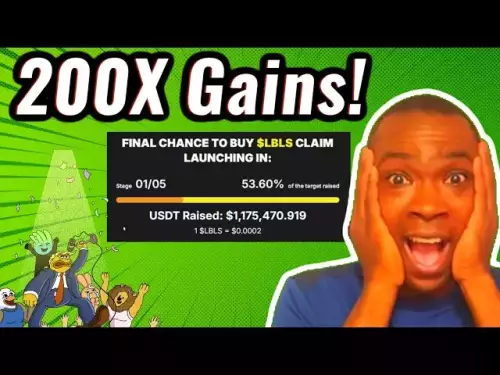-
 Bitcoin
Bitcoin $111100
0.49% -
 Ethereum
Ethereum $4304
0.21% -
 XRP
XRP $2.888
2.36% -
 Tether USDt
Tether USDt $0.9999
-0.03% -
 BNB
BNB $879.1
1.62% -
 Solana
Solana $207.9
2.67% -
 USDC
USDC $0.9998
-0.01% -
 Dogecoin
Dogecoin $0.2320
7.05% -
 TRON
TRON $0.3306
0.59% -
 Cardano
Cardano $0.8407
1.68% -
 Hyperliquid
Hyperliquid $48.50
3.55% -
 Chainlink
Chainlink $22.52
0.46% -
 Ethena USDe
Ethena USDe $1.001
-0.02% -
 Sui
Sui $3.395
0.74% -
 Bitcoin Cash
Bitcoin Cash $602.5
0.82% -
 Stellar
Stellar $0.3645
1.67% -
 Avalanche
Avalanche $24.82
0.93% -
 Hedera
Hedera $0.2211
0.99% -
 UNUS SED LEO
UNUS SED LEO $9.606
0.00% -
 Cronos
Cronos $0.2583
-2.44% -
 Litecoin
Litecoin $113.7
0.82% -
 Toncoin
Toncoin $3.094
0.39% -
 Shiba Inu
Shiba Inu $0.00001254
1.50% -
 Polkadot
Polkadot $4.040
4.96% -
 Uniswap
Uniswap $9.429
0.08% -
 Dai
Dai $0.9999
-0.01% -
 Ethena
Ethena $0.7629
3.04% -
 World Liberty Financial
World Liberty Financial $0.2111
-13.16% -
 Monero
Monero $269.9
0.50% -
 Aave
Aave $300.9
-0.41%
What is a trailing stop order on Binance Futures?
A trailing stop order on Binance Futures automatically adjusts your stop price as the market moves in your favor, locking in profits without manual updates—ideal for volatile crypto markets. (154 characters)
Jul 22, 2025 at 10:07 pm
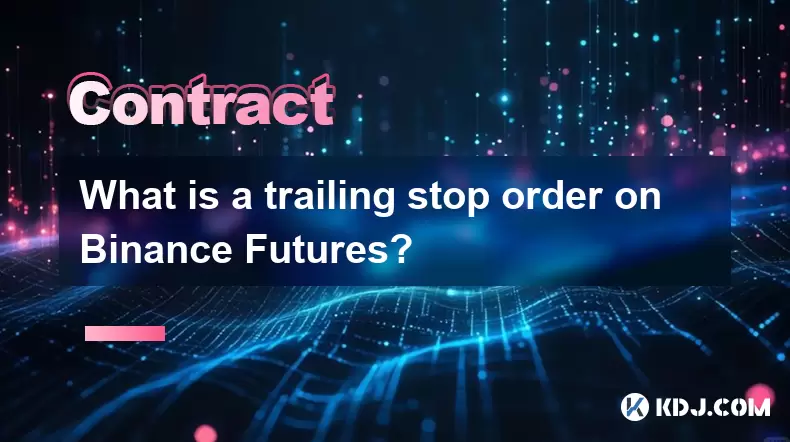
Understanding Trailing Stop Orders
A trailing stop order on Binance Futures is a type of conditional order that allows traders to set a dynamic stop price, which automatically adjusts as the market price moves in their favor. Unlike a traditional stop-loss order with a fixed price, a trailing stop follows the market price at a specified offset, helping traders lock in profits while minimizing the risk of premature exits. This feature is especially useful in volatile markets where prices can swing rapidly. The key advantage lies in its ability to protect gains automatically without requiring constant manual adjustments.
How Trailing Stop Orders Work on Binance Futures
When you place a trailing stop order, you define a trailing delta—a percentage or fixed amount that determines how far the stop price lags behind the highest (for long positions) or lowest (for short positions) price reached. For example, if you’re long on BTC/USDT at $60,000 and set a trailing delta of 2%, your stop price starts at $58,800. If the price rises to $62,000, the stop price updates to $60,760 (2% below $62,000). If the price then drops to $60,760, the order triggers a market sell. This mechanism ensures you capture gains while still protecting against sudden reversals.
Step-by-Step Guide to Setting a Trailing Stop on Binance Futures
To place a trailing stop order on Binance Futures:
- Navigate to the Futures trading interface and select your desired contract (e.g., BTCUSDT perpetual).
- Switch to the 'Stop' order type and choose “Trailing Stop” from the dropdown menu.
- Enter your trailing delta as either a percentage (e.g., 2%) or a fixed price value (e.g., 100 USDT).
- Specify the quantity of the asset you wish to trade.
- Review the order preview, which shows your current stop price based on the latest market movement.
- Click “Sell/Short” or “Buy/Long” to submit the order depending on your position direction.
This process ensures your trailing stop is active and continuously monitored by Binance’s system without needing manual intervention.
Difference Between Trailing Stop and Regular Stop-Loss
A regular stop-loss order uses a static price level that doesn’t change unless manually adjusted. If you set a stop-loss at $59,000 while long at $60,000, it remains at $59,000 even if the price rises to $65,000. In contrast, a trailing stop dynamically moves with the market. If the price climbs to $65,000 with a 2% trailing delta, the stop updates to $63,700—locking in $3,700 of profit instead of risking a $1,000 loss if it falls back to $59,000. This flexibility makes trailing stops ideal for trend-following strategies.Practical Use Cases for Trailing Stops in Futures Trading
Traders use trailing stops in various scenarios: - Trend continuation plays: When entering a long position during an uptrend, a trailing stop helps ride the momentum while guarding against pullbacks.
- Volatility management: In fast-moving markets like crypto, trailing stops reduce emotional decision-making by automating exits.
- Scalping or swing trading: Short-term traders set tight trailing deltas (e.g., 0.5%–1%) to secure small but consistent profits.
- Position scaling: Traders may trail part of their position while letting the rest run with a wider delta to maximize upside.
Each use case relies on the core benefit: automated profit protection without constant monitoring.
Common Mistakes to Avoid When Using Trailing Stops
- Setting the trailing delta too tight: A delta of 0.1% might trigger prematurely due to normal market noise, especially in low-liquidity pairs.
- Ignoring market conditions: In choppy or sideways markets, trailing stops can lead to repeated whipsaw losses.
- Forgetting to check order type compatibility: Trailing stops on Binance Futures are conditional orders—they must be placed as stop orders, not limit or market orders.
- Misunderstanding activation logic: The trailing stop only begins tracking after the initial stop price is activated by a favorable price move.
Avoiding these errors ensures your trailing stop functions as intended.
Frequently Asked Questions
Q: Can I modify a trailing stop order after placing it on Binance Futures?Yes. Go to the “Open Orders” tab, locate your trailing stop, and click “Edit.” You can adjust the trailing delta or cancel the order entirely. Note that modifying the delta resets the trailing logic based on the current market price.
Q: Does a trailing stop order work when my device is offline?Absolutely. Once submitted, Binance’s servers manage the order. No active connection is needed. The system monitors price movements and executes the order if the trailing conditions are met.
Q: What happens if the market gaps below my trailing stop price?The order becomes a market order and executes at the next available price. In extreme volatility, slippage may occur, meaning you could get filled at a worse price than expected. This is common in crypto futures during news events or flash crashes.
Q: Can I use trailing stops with leverage on Binance Futures?Yes. Trailing stops function the same way regardless of leverage. However, higher leverage increases liquidation risk—if the trailing stop doesn’t trigger in time, your position may be liquidated before the stop executes. Always align your trailing delta with your leverage level.
Disclaimer:info@kdj.com
The information provided is not trading advice. kdj.com does not assume any responsibility for any investments made based on the information provided in this article. Cryptocurrencies are highly volatile and it is highly recommended that you invest with caution after thorough research!
If you believe that the content used on this website infringes your copyright, please contact us immediately (info@kdj.com) and we will delete it promptly.
- MYX Clocks, Gains, Pump-Dump: Navigating the Crypto Frenzy
- 2025-09-08 18:25:12
- Bitcoin Billionaires: Michael Saylor's Journey to the Top and the Future of Bitcoin
- 2025-09-08 18:45:17
- Queen Elizabeth 50p Coin: Rare Sales and Hidden Treasures!
- 2025-09-08 18:45:17
- BlockchainFX: The Presale Poised to Redefine Crypto Predictions
- 2025-09-08 18:25:12
- Bitcoin Forecast: Sharp Decline on the Horizon? What You Need to Know
- 2025-09-08 18:30:12
- Dogecoin Price Forecast: ETF Optimism Ignites Meme Coin Rally
- 2025-09-08 18:50:12
Related knowledge
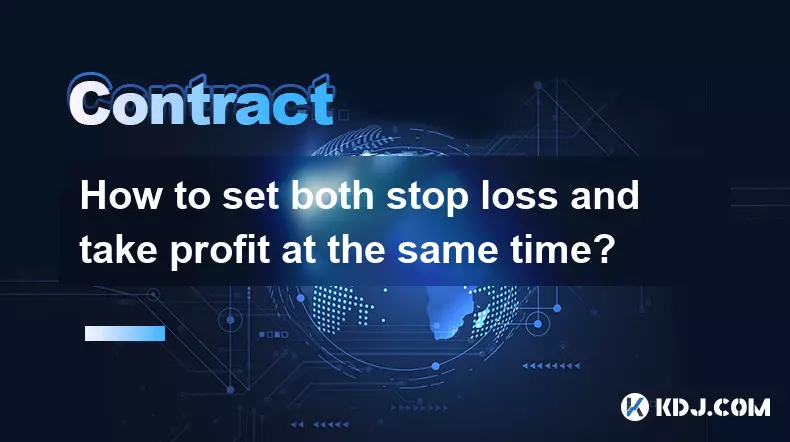
How to set both stop loss and take profit at the same time?
Sep 06,2025 at 04:36pm
Understanding Simultaneous Stop Loss and Take Profit Orders1. Placing both stop loss and take profit orders at the same time is a standard practice in...
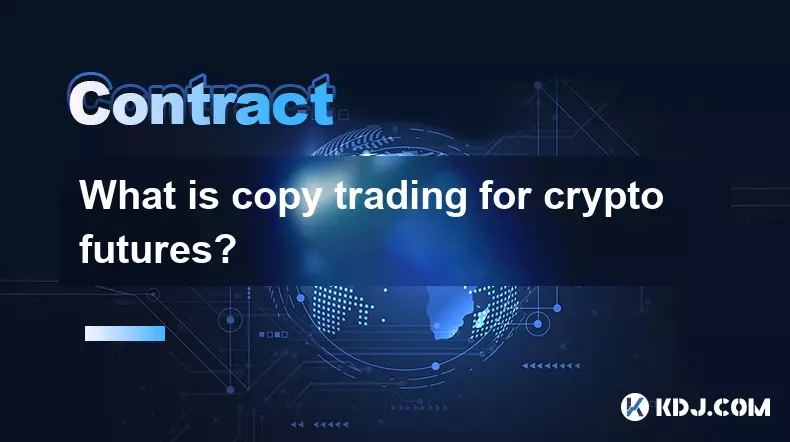
What is copy trading for crypto futures?
Sep 07,2025 at 02:00am
What Is Copy Trading in Crypto Futures?1. Copy trading in crypto futures allows investors to automatically replicate the trades of experienced traders...
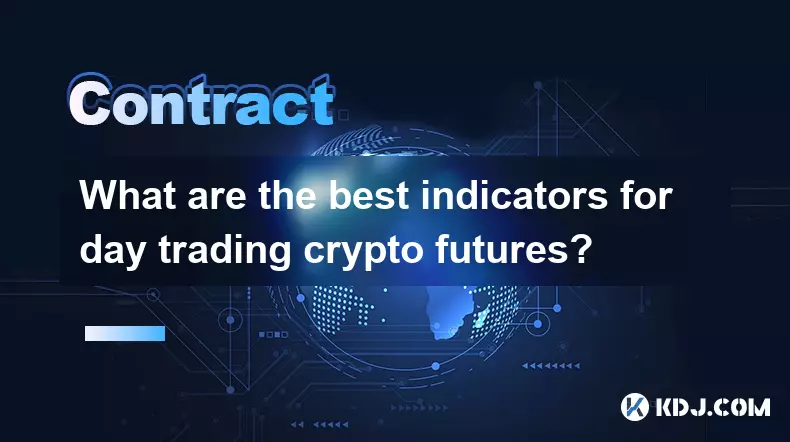
What are the best indicators for day trading crypto futures?
Sep 08,2025 at 10:18am
Top Technical Indicators for Crypto Futures Day Trading1. The Relative Strength Index (RSI) is widely used to identify overbought or oversold conditio...
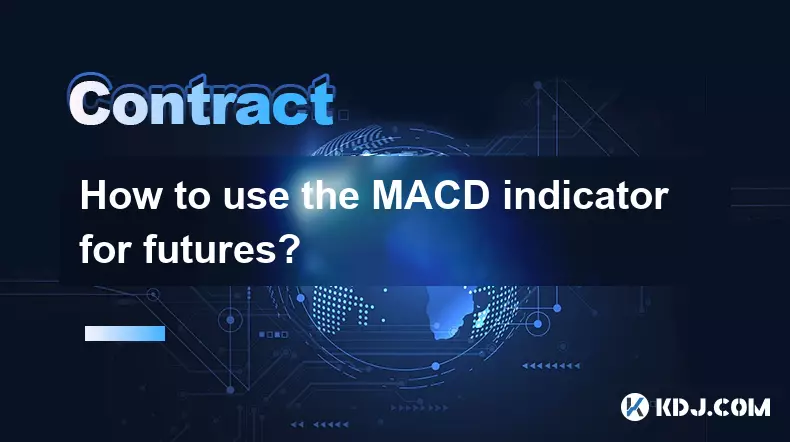
How to use the MACD indicator for futures?
Sep 07,2025 at 09:00pm
Understanding the MACD Indicator in Futures Trading1. The MACD (Moving Average Convergence Divergence) indicator is a momentum oscillator widely used ...

What to do if you are about to be liquidated?
Sep 06,2025 at 01:00am
Understanding Liquidation in the Crypto Market1. Liquidation occurs when a trader’s margin balance falls below the required maintenance margin, forcin...
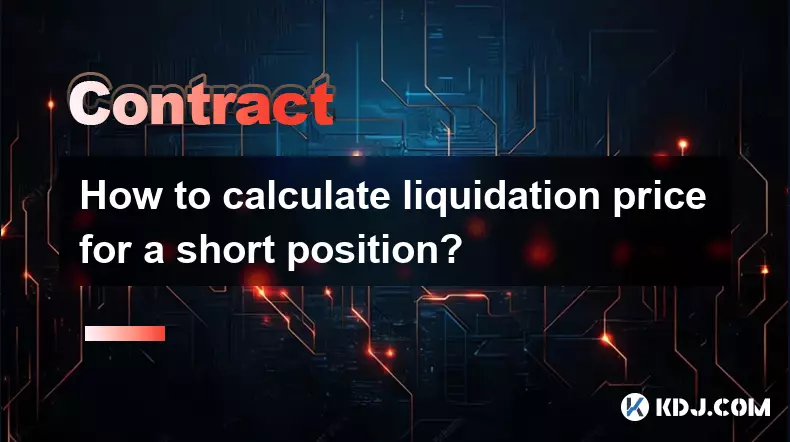
How to calculate liquidation price for a short position?
Sep 08,2025 at 03:54am
Understanding the Basics of Short Position Liquidation1. A short position in the cryptocurrency market involves borrowing an asset and selling it imme...

How to set both stop loss and take profit at the same time?
Sep 06,2025 at 04:36pm
Understanding Simultaneous Stop Loss and Take Profit Orders1. Placing both stop loss and take profit orders at the same time is a standard practice in...

What is copy trading for crypto futures?
Sep 07,2025 at 02:00am
What Is Copy Trading in Crypto Futures?1. Copy trading in crypto futures allows investors to automatically replicate the trades of experienced traders...

What are the best indicators for day trading crypto futures?
Sep 08,2025 at 10:18am
Top Technical Indicators for Crypto Futures Day Trading1. The Relative Strength Index (RSI) is widely used to identify overbought or oversold conditio...

How to use the MACD indicator for futures?
Sep 07,2025 at 09:00pm
Understanding the MACD Indicator in Futures Trading1. The MACD (Moving Average Convergence Divergence) indicator is a momentum oscillator widely used ...

What to do if you are about to be liquidated?
Sep 06,2025 at 01:00am
Understanding Liquidation in the Crypto Market1. Liquidation occurs when a trader’s margin balance falls below the required maintenance margin, forcin...

How to calculate liquidation price for a short position?
Sep 08,2025 at 03:54am
Understanding the Basics of Short Position Liquidation1. A short position in the cryptocurrency market involves borrowing an asset and selling it imme...
See all articles
























